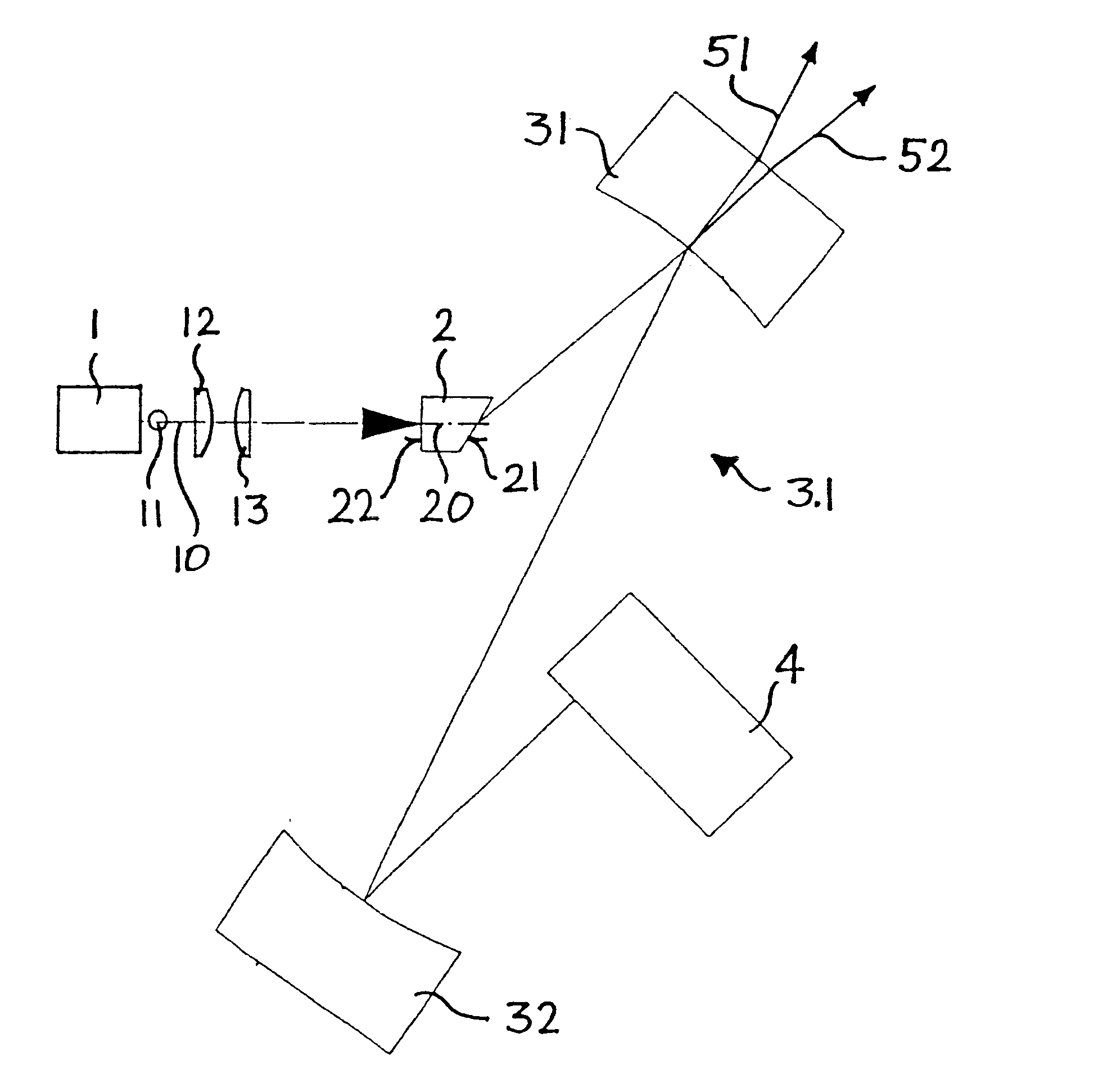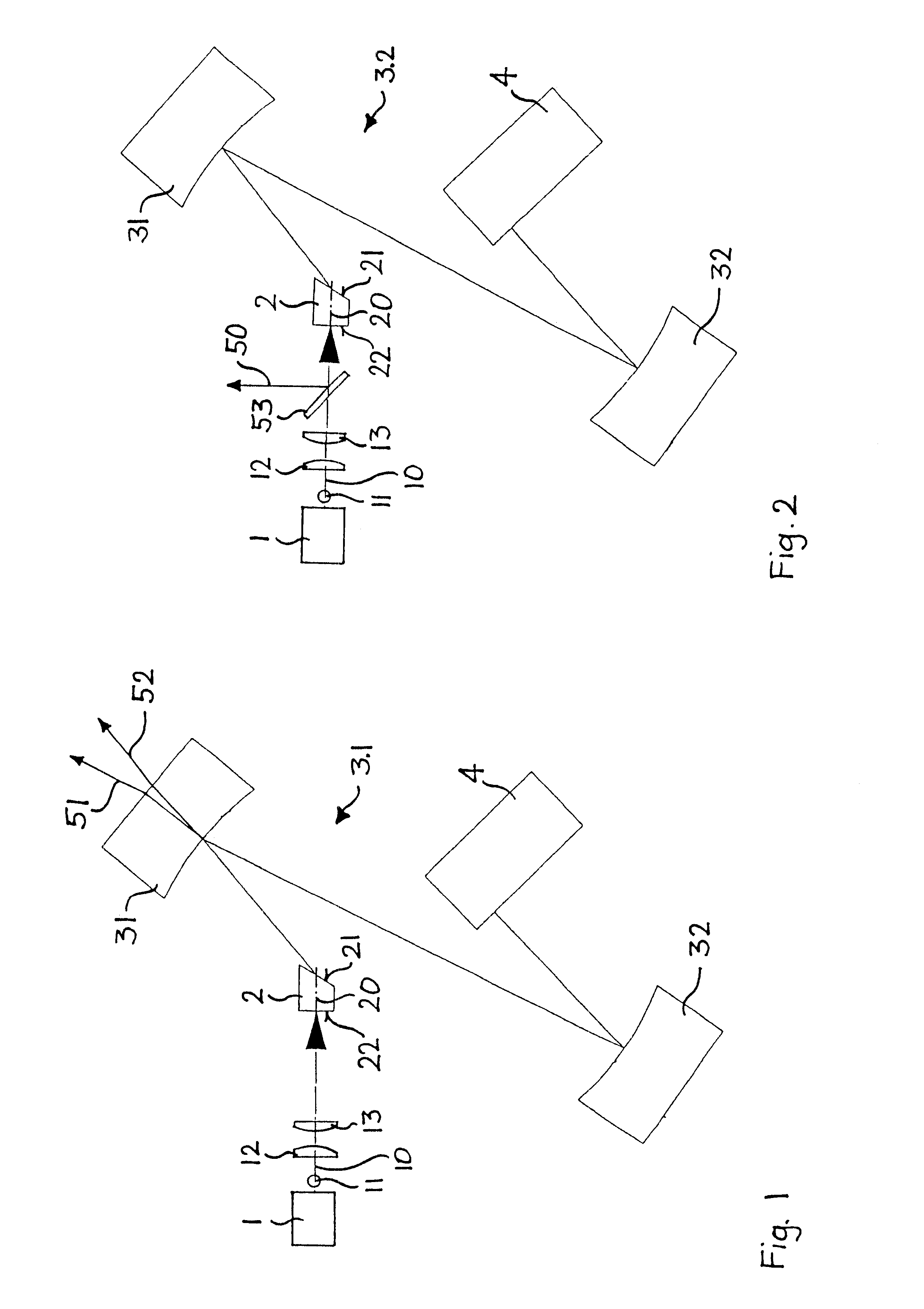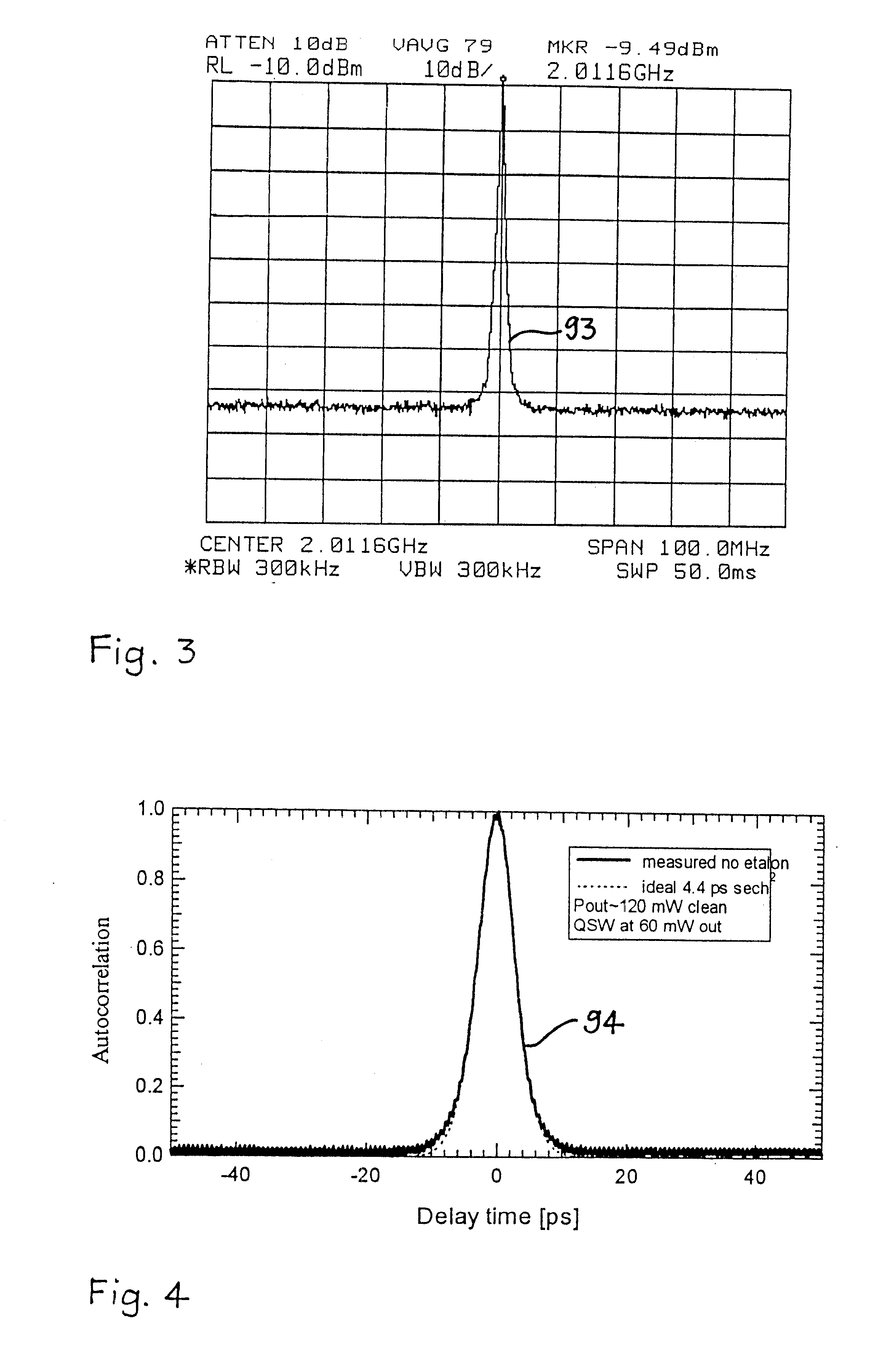High-repetition rate passively mode-locked solid-state laser
a solid-state laser and high-repetition rate technology, applied in semiconductor lasers, laser details, optical resonator shape and construction, etc., can solve the problems of additional complexity and instability in the laser system, the difficulty of achieving the average power of the active mode locker, and the disadvantages of cost and complexity
- Summary
- Abstract
- Description
- Claims
- Application Information
AI Technical Summary
Benefits of technology
Problems solved by technology
Method used
Image
Examples
Embodiment Construction
In one embodiment, the invention uses a laser crystal of Nd:vanadate (Nd:YVO.sub.5) pumped by a high-brightness diode laser and a SESAM device with less than 1% modulation depth. Referring to FIG. 1, a high-brightness diode laser 1 (Polaroid part No. 2000-808-BFY-BW-MCL), which emits 808 nm laser light 10 of up to 2 W from an aperture size of approximately 100 .mu.m by 1 .mu.m, is collimated in its highly divergent (sagittal) axis with a microlens 11. Then the light 10 is imaged through two achromatic lenses 12, 13 (focal lengths 100 mm and 50 mm, respectively), which focus the light down to a diameter of approximately 80 .mu.m in the tangential plane and approximately 50 .mu.m or less in the sagittal plane. At the focus of the light 10, approximately 1.2 W of pump power was measured at a pump wavelength of nominally 808 nm, which is then available for optically pumping a laser gain element. The pump diode laser 1 achieves maximum power at a drive current of 2.2 A, and begins to out...
PUM
 Login to View More
Login to View More Abstract
Description
Claims
Application Information
 Login to View More
Login to View More - R&D
- Intellectual Property
- Life Sciences
- Materials
- Tech Scout
- Unparalleled Data Quality
- Higher Quality Content
- 60% Fewer Hallucinations
Browse by: Latest US Patents, China's latest patents, Technical Efficacy Thesaurus, Application Domain, Technology Topic, Popular Technical Reports.
© 2025 PatSnap. All rights reserved.Legal|Privacy policy|Modern Slavery Act Transparency Statement|Sitemap|About US| Contact US: help@patsnap.com



